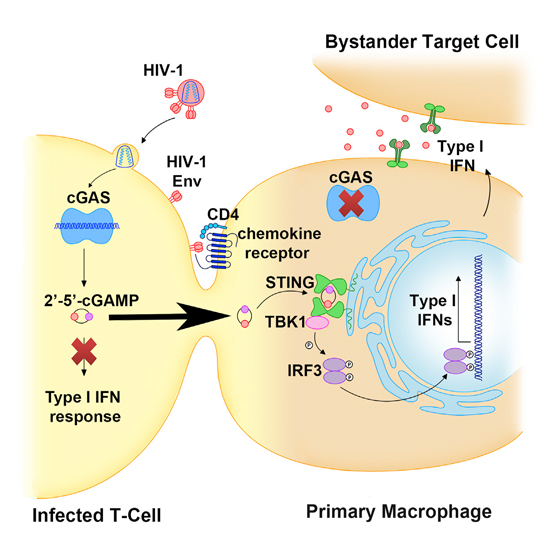cGAS-Mediated Innate Immunity Spreads Intercellularly through HIV-1 Env-Induced Membrane Fusion Sites
12-Oct-2016
Cell Host & Microbe, Volume 20, Issue 4, p443–457, DOI: https://doi.org/10.1016/j.chom.2016.09.003
Cell Host & Microbe, online article
Upon sensing cytoplasmic retroviral DNA in infected cells, cyclic GMP-AMP (cGAMP) synthase (cGAS) produces the cyclic dinucleotide cGAMP, which activates STING to trigger a type I interferon (IFN) response. We find that membrane fusion-inducing contact between donor cells expressing the HIV envelope (Env) and primary macrophages endogenously expressing the HIV receptor CD4 and coreceptor enable intercellular transfer of cGAMP. This cGAMP exchange results in STING-dependent antiviral IFN responses in target macrophages and protection from HIV infection. Furthermore, under conditions allowing cell-to-cell transmission of HIV-1, infected primary T cells, but not cell-free virions, deliver cGAMP to autologous macrophages through HIV-1 Env and CD4/coreceptor-mediated membrane fusion sites and induce a STING-dependent, but cGAS-independent, IFN response in target cells. Collectively, these findings identify an infection-specific mode of horizontal transfer of cGAMP between primary immune cells that may boost antiviral responses, particularly in infected tissues in which cell-to-cell transmission of virions exceeds cell-free infection.











